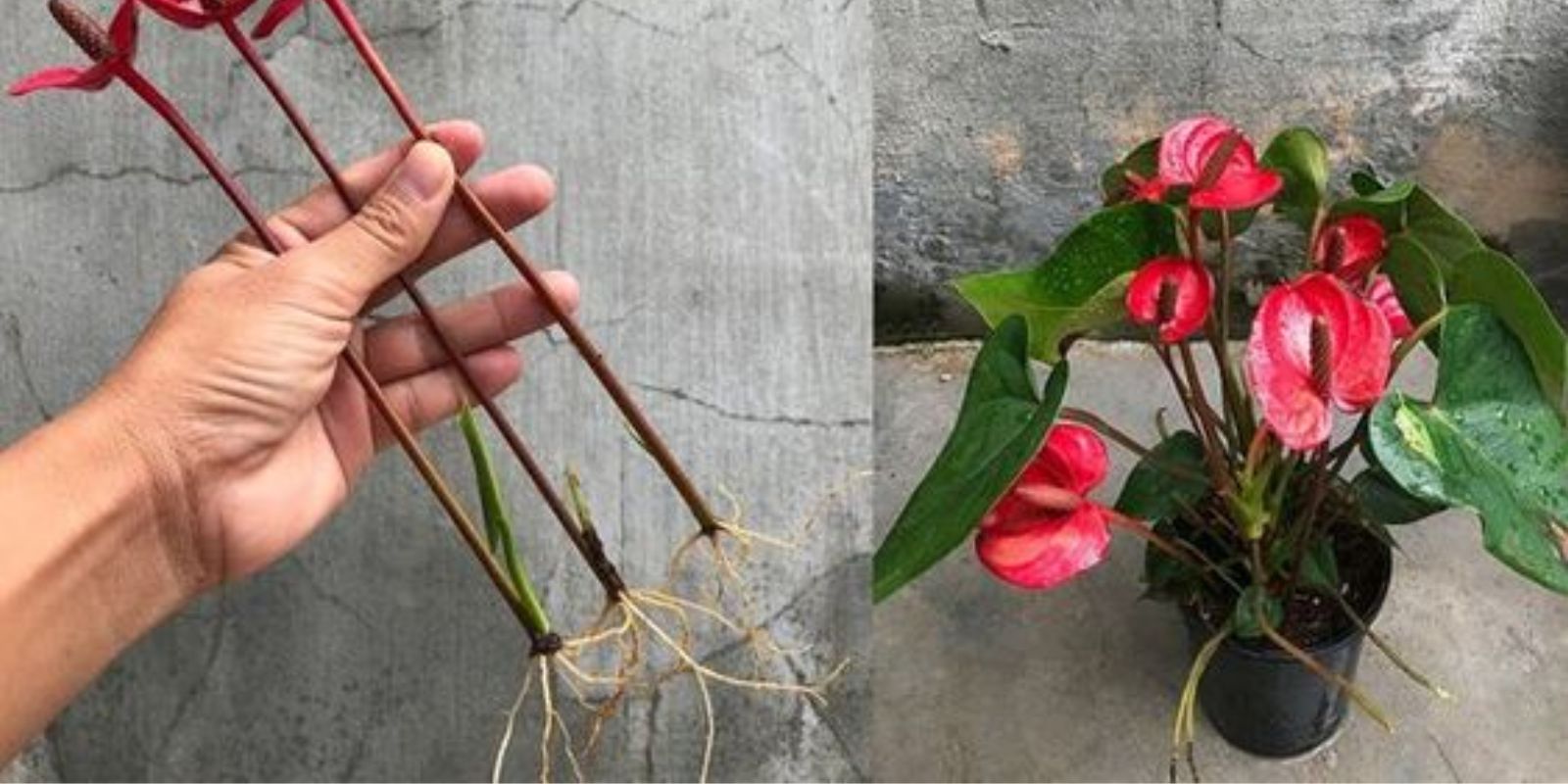Anthurium plants, with their glossy foliage and distinctive heart-shaped flowers, are prized additions to any indoor or garden setting. Known for their long-lasting blooms and tropical elegance, Anthuriums can be encouraged to produce a profusion of flowers with the right care and attention. In this guide, we will explore the essential steps and strategies to foster a spectacular flower display in your Anthurium plant, ensuring it becomes the envy of your neighborhood.
Introduction to Anthurium Plants
Anthuriums, native to tropical regions of Central and South America, belong to the Araceae family. They are commonly known as flamingo flowers or laceleaf, owing to their vibrant spathes (modified leaves) that surround the spadix (flower spike). These plants thrive in warm, humid environments and are favored for their ornamental value and relatively low maintenance requirements.
Understanding Anthurium Flowering
Anthuriums typically bloom year-round under optimal conditions, producing flowers that can last several weeks to months. The flowering process is influenced by several key factors, including light, water, humidity, fertilization, and temperature. By addressing these factors correctly, you can encourage your Anthurium to bloom more frequently and abundantly.
Steps to Promote Flowering in Anthurium Plants
1. Light Requirements
Proper lighting is crucial for Anthuriums to bloom. Here’s how to provide the right amount of light:
- Indirect Light: Place your Anthurium in a location with bright, indirect light. Direct sunlight can scorch the leaves, so filtered light or placing it a few feet away from a window is ideal.
- Light Duration: Anthuriums generally thrive with 12-16 hours of light per day. Supplemental grow lights can be used during darker months to maintain consistent light levels.
2. Watering Routine
Maintaining a consistent watering schedule is essential for Anthuriums to thrive and bloom:
- Moisture Needs: Anthuriums prefer evenly moist soil. Water thoroughly when the top inch of soil feels dry, but avoid waterlogging or allowing the roots to sit in water.
- Water Quality: Use room-temperature water or rainwater to avoid shocking the plant with cold water.
3. Humidity Control
Anthuriums are native to humid rainforest environments and thrive in high humidity levels:
- Humidity Requirements: Aim for humidity levels between 60-80%. Increase humidity by using a humidity tray filled with water and pebbles, or by regularly misting the plant’s leaves.
4. Fertilization
Proper fertilization provides Anthuriums with essential nutrients for healthy growth and flowering:
- Fertilizer Type: Use a balanced, water-soluble fertilizer diluted to half strength. Apply fertilizer every 4-6 weeks during the growing season (spring and summer).
- Frequency: Reduce fertilization during the dormant season (fall and winter) when growth slows down.
5. Temperature Considerations
Anthuriums prefer warm temperatures and are sensitive to cold drafts:
- Optimal Temperature: Maintain temperatures between 65-80°F (18-27°C) during the day and slightly cooler at night. Avoid placing Anthuriums near drafts from heaters, air conditioners, or open windows.
Additional Tips for Anthurium Care
- Pruning: Remove spent flowers and yellowing leaves promptly to encourage new growth and blooming.
- Repotting: Repot Anthuriums every 2-3 years using a well-draining potting mix to refresh nutrients and encourage healthy root growth.
- Pest Management: Monitor for pests like spider mites or aphids, and treat promptly using insecticidal soap or neem oil if detected.
Troubleshooting Anthurium Flowering Issues
1. Lack of Blooms
- Insufficient Light: Increase light exposure gradually if the plant is not flowering.
- Improper Watering: Ensure the plant is receiving adequate moisture without waterlogging the roots.
2. Yellowing Leaves
- Overwatering: Adjust watering frequency to prevent waterlogged soil, which can lead to root rot and leaf yellowing.
3. Pests and Diseases
- Pest Control: Monitor for pests regularly and treat infestations promptly to prevent damage to leaves and flowers.
Conclusion
By following these comprehensive steps and guidelines, you can effectively promote flowering in your Anthurium plant and enjoy a continuous display of vibrant, heart-shaped blooms. Remember that each Anthurium may have slightly different preferences, so observe your plant’s responses and adjust care accordingly. With patience and consistent care, your Anthurium will thrive and become a stunning centerpiece in your home or garden. Share your success and newfound knowledge with your gardening community to inspire others in their Anthurium care journey. Happy growing!
This article provides detailed insights and practical tips to help gardeners achieve abundant flowering in Anthurium plants, enhancing their beauty and ornamental value.

